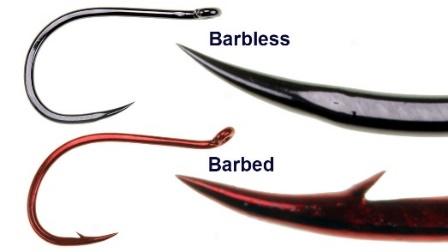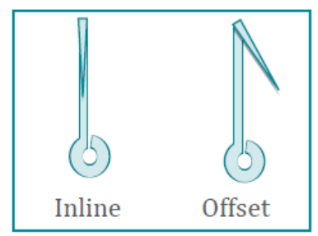Angler Intercept Survey
Recreational Angler Survey of Sea Turtle Interactions
Recreational Angler Survey of Sea Turtle Interactions Survey Instructions
Angler Intercept Survey
OMB: 0648-0774
Recreational Angler Survey of Sea Turtle Interactions
Introduction: All sea turtles in United States waters are listed as threatened or endangered under the Endangered Species Act (ESA). When sea turtle distribution overlaps with commercial and recreational fishing effort, sea turtles may be accidentally captured in the fishing gear. For commercial fisheries, observers are often placed on vessels to better understand these interactions. These observations provide insight into how and why these interactions occur and the impact of the interactions on sea turtle populations. In contrast, recreational fishing often occurs from shore, man-made structures, and private vessels making traditional observer coverage challenging. Therefore, alternative data collection methods must be considered. NOAA Fisheries will use this survey to gain similar insights into recreational fishing interactions and impacts. This survey can be conducted on any man-made fishing structure (e.g., jetty, pier, bridge, etc. as defined by the NOAA Fisheries Access POint Angler Intercept Survey Manual). While the survey packet consists of several documents, the survey itself should only take about 10-15 minutes for an individual angler to complete.
Documents included in angler survey packet: 1) these NOAA Recreational Angler Survey Instructions, 2) Shore-based Survey Design Guide, 3) Recreational Fishing Pier Characterization Form, 4) Fishing Pier Angler Survey Cover Sheet, and 5) Fishing Pier Angler Survey. Each of these forms will be described below.
Related documents: There are two related documents that complement the angler survey: 6) Incidental Capture Intake Form Instructions and 7) Incidental Capture Intake Form. This form is used by rehabilitation facilities when a sea turtle has interacted with recreational fishing gear. The form documents information similar to that collected during the angler survey. When used together, these documents better inform our understanding of sea turtle interactions and angler practices. This information can then be used by management to develop measures to reduce incidental captures.
Shore-based Survey Design Guide: This guide provides the user with the goals of the survey and instructions on survey design and implementation.
Recreational Fishing Pier Characterization Form: This is designed to characterize a particular fishing pier and provide an inventory of piers in a particular location. This information can be then used when selecting survey locations, implementing outreach activities, etc. It only needs to be filled out once and should be updated if the site changes. NOAA Fisheries is keeping a digital record of this data.
Survey Cover Sheet: This form records angler effort and participation, and environmental conditions. The interviewer should record the Environmental Conditions when first arriving at the pier. Record the angler and line counts while completing the surveys and enter final tallies at the end of the survey period.
Date: Enter the date in MM/DD/YYYY format.
Survey ID #: The survey ID is the concatenation of the date (MMDDYYYY) and pier abbreviation (developed by survey administrator). Ex. 05122023-PB
Location: List the Site Name, Town, and State.
Start time/End time: All times should be entered in 24 hour time.
Weekday: Circle the day of the week survey conducted.
Environmental Conditions: Use a cell phone or website to obtain the air temperature. Circle the term that most closely describes the wave height (ft), cloud cover and amount of precipitation at the start of the survey. If weather changes greatly during the survey, please note changes in the Comments section.
Interviewer/Team Leader: Each pier survey should have a designated team leader. Their full name (first and last) should be listed first followed by the full name of any additional interviewers.
Number of anglers: At the end of the survey, add the # of Anglers from all the Survey forms and enter this in the Total Count.
Number of lines in the water: At the end of the survey, add the # of Lines in the Water from all the Survey forms and enter this in the Total Count.
Number of surveys completed: At the end of the survey, count the number of interviews completed and enter this in the Total Count.
Total number of anglers not participating: When an angler declines to participate, enter a hash mark. Ask the angler if they are willing to tell you their zip code and record that on the line. The data will be used to determine a nonresponse rate. At the end of the survey, tally the total number of anglers that declined to participate.
Number of anglers who have already taken the survey: Enter a hash mark for each angler who was not surveyed because they had already taken the survey within the last 3 months AND they had not had any changes to their previous answers. If answers to sea turtle related questions have changed, the angler may be interviewed again. At the end of the survey, tally the total number of anglers who had already been surveyed.
Completed surveying the entire location? A completed location is one in which the interviewer(s) were able interview all angler groups at the survey site in the allotted time. The goal is always to complete a site but sometimes time constraints or weather may cause this to not happen. Circle yes or no, as appropriate.
All anglers & lines counted? Circle YES if all the angler and line counts were completed by the end of the survey period or NO if there were still anglers fishing that were not counted.
Angler questionnaire: This form includes the questions to be asked of individual anglers. Only adults may respond. If several anglers are fishing together only complete one survey for that group of anglers. Anglers should not be interviewed if they have completed a survey in the last 3 months, unless they have had an interaction with a sea turtle since the last interview. The number of anglers who have previously participated should be recorded on the cover sheet. If there are some members of an angler group who have not previously completed a survey, one of those anglers can be interviewed.
The questionnaire should take approximately ten minutes to complete. If the angler gets a bite while being interviewed, the interviewer should stop the interview and either wait or come back later to complete the interview.
Date: Enter the date in MM/DD/YYYY format.
Time: Enter the time the interview starts. All times should be entered in 24 hour time.
Survey ID: The survey ID is the concatenation of the date (MMDDYYYY) and location abbreviation. Ex. 05122023-PB
Survey #: Sequentially number each survey completed at a single location each day.
Site Name: List the location or pier name.
Data Collector: Enter the full (first and last) name of the data collector.
Residential state: Enter the state of residence of the angler being interviewed.
Residential zip code: Enter the zip code of the angler being interviewed.
# of Anglers: Record the number of people fishing with the angler being interviewed. An angler is anyone who is actively fishing.
# of lines in the water: Enter the total lines the angler being interviewed has in the water when the interview begins.
Where was angler fishing? Circle location at the site where the angler was fishing.
Is the angler: Either ask the angler or watch how the angler is fishing and determine if they are active fishing (i.e. moving the pole or reeling to make the bait move) or inactive fishing and not moving the rod and reel.
Angler Interview Questions
Questions 1 – 4 ask the angler about time, month and frequency of fishing at that specific location only. If the angler fishes in more than one season, record the amount of effort at that location for each season fished.
Questions 5 – 14 ask the angler about what they are fishing for, type of tackle, and bait they are currently using at that specific location. Circle or record the given response.
What are you fishing for today? The top local species will be listed. Circle up to two species the angler is targeting. If the angler lists three or more species, circle A) anything. If the species is not listed, write the species name under J) Other.
Guidance regarding the number of poles being fished:
If the angler is using multiple poles and they are rigged the same way (i.e. all have the same hook, # of hooks, tackle, bait, etc.) circle YES and record answers to questions 10 – 14 under A) All poles or Pole 1.
If the angler is using multiple poles and they are NOT rigged the same way (i.e. different hooks, tackle, bait, etc.) record answers to questions 10 – 14 for each pole.
Hook type and number: Some anglers may be using multiple hooks on a single pole. Record how many hooks they are using on each pole. Ask the angler if you can see the hook or similar hook (do NOT make them reel in their line, either ask to see a similar hook or wait until they check their bait). Many anglers do not know what type of hook they are using. Verify hook type ID. If the hook is a circle hook, select if it is offset or inline.

Record if the hook is barbless: a barbless hook does NOT have a small, backward-facing point near the tip of the hook.
Hook size: Using a ruler, measure the total length (mm) from the top of the eye to the bottom of the hook, as below. If it is a circle hook, also measure gape (mm) length.

Popular hooks used: Identify the type of hook used based on examples and descriptions below.
J-hook: the shaft is straight and resembles the letter “J” and the point and barb do not point toward the shaft. J-hooks may be offset or inline.


Circle hook: sharply curved back in a circular shape with the point is pointed toward the shaft. Circle hooks may be offset or inline. The degree of offset can vary. Gape is measured as the tip of the point to the inside of the shaft, as shown above.
Kahle hook: curved back in an oval shape with the hook point is pointed toward the hook eye; distance between the point and the shaft is much greater than on a circle hook.
Jig hook: bent on the shank before the eye about 60-90°, often used with artificial lures.
Treble hook: consists of three hooks with a single eye, often used with artificial lures.
Questions 15 – 17 ask the angler about bait and fish cleaning. Circle the most appropriate answer.
Questions 18 – 22 are sea turtle specific questions pertaining to what the angler has observed in the last 6 months while fishing at this location only. Circle the most appropriate answers.
If the angler has NOT caught a sea turtle at that location within the last 6 months, thank the angler and end the interview or ask additional protected species questions if provided. If the angler caught a sea turtle within the last 6 months, ask questions 23 – 36.
Questions 23 – 36 pertain to the most recently captured sea turtle within the last 6 months. It would be helpful to have outreach materials with the stranding networks’ contact information to provide if the angler asks where captures should be reported. This could be in the form of tackle box stickers, business cards, etc.
Additional questions on other protected species. Depending on your region and your goals for the survey, you may also want to ask some or all of the questions regarding other protected species.
OMB
Control No.: XXX-XXX Expiration Date: XX/XX/XXXX
| File Type | application/vnd.openxmlformats-officedocument.wordprocessingml.document |
| Author | Jaymie Reneker |
| File Modified | 0000-00-00 |
| File Created | 2024-12-06 |
© 2025 OMB.report | Privacy Policy